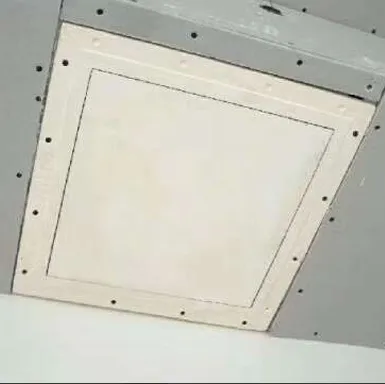Dec . 15, 2024 09:05 Back to list
false ceiling access panel
Understanding False Ceiling Access Panels A Comprehensive Guide
False ceilings, also known as suspended ceilings, have become increasingly popular in modern construction and interior design. They not only enhance the aesthetic appeal of a space but also serve a functional purpose by concealing electrical wiring, plumbing, and HVAC systems. However, one critical component often overlooked during the design phase is the access panel. Access panels for false ceilings play a vital role in ensuring that maintenance work is both efficient and unobtrusive. This article will explore the importance, types, and installation considerations of false ceiling access panels.
Importance of False Ceiling Access Panels
Access panels are essential for providing entry points to the ceiling space or wall cavities without causing significant disruption to the surrounding areas. They allow for easy access to electrical and mechanical systems located above the false ceiling, making repairs, maintenance, or inspections feasible. Without access panels, technicians may have to remove entire sections of the ceiling, resulting in extensive restoration work and additional costs.
Additionally, access panels contribute to the overall safety and functionality of a building. In commercial settings, for instance, regular inspections are necessary to comply with health and safety standards. Access panels facilitate these inspections by allowing quick and easy access to fire suppression systems, ventilation ducts, and other critical infrastructure.
Types of Access Panels
There are several types of access panels designed for false ceilings, each with unique features and applications. Understanding these types can help in selecting the most suitable option for a particular project.
1. Flush Access Panels These panels are installed in such a way that they are level with the false ceiling, making them virtually invisible. They are often used in areas where aesthetics are a priority.
2. Hinged Access Panels These panels come with hinges that allow them to swing open, providing convenient access to the concealed areas. They are ideal for situations where regular access is needed.
false ceiling access panel

4. Fire-Rated Access Panels In commercial buildings, it is essential to consider fire safety. Fire-rated access panels are designed to withstand high temperatures and prevent the spread of fire, making them a necessary inclusion in fire-rated ceilings.
5. Acoustic Access Panels These panels not only provide access but also help in soundproofing the room. They are suitable for spaces like recording studios or conference rooms where noise control is crucial.
Installation Considerations
When planning the installation of false ceiling access panels, several factors should be taken into account
- Location Determine the most practical location for the access panels. They should be placed in areas that allow for easy access without disrupting the ceiling's visual design.
- Size Choose an appropriate size that will allow for access while minimizing the visual impact on the ceiling. Larger access panels may be necessary for areas housing substantial equipment.
- Material Consider the material of the panel. Options range from metal to drywall, and the choice depends on the ceiling's overall design and the required durability.
- Compliance Ensure that the installation meets local building codes and regulations, especially if the access panels are part of fire safety systems.
Conclusion
False ceiling access panels are an indispensable feature of modern architecture, providing vital access to hidden systems while maintaining the aesthetic integrity of a space. By understanding the types available and the considerations for installation, architects, builders, and property owners can ensure the longevity and functionality of their structures. Ultimately, the inclusion of well-planned access panels can lead to easier maintenance and a safer, more efficient building environment. Whether in residential or commercial settings, thoughtful integration of access panels will enhance both practicality and design.
-
Quality Ceiling Trap Doors & Access Panels | Easy & Secure AccessNewsAug.30,2025
-
Durable Ceiling T Grid Systems | Easy InstallationNewsAug.29,2025
-
PVC Gypsum Ceiling: Durable, Laminated Tiles for Modern SpacesNewsAug.28,2025
-
Pvc Gypsum Ceiling Is DurableNewsAug.21,2025
-
Mineral Fiber Board Is DurableNewsAug.21,2025
-
Ceiling Tile Clip Reusable DesignNewsAug.21,2025







